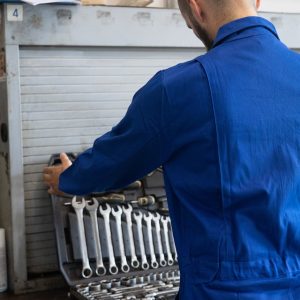You may be wondering, “What are ribbon mixers for?” If so, this article will help you decide if this type of blender is the best choice for your kitchen. Here you will learn about continuous ribbon agitators, Horizontal ribbon mixers, and a Horizontal ribbon blender. Let’s get started. Read on to find out more about these machines. You can use them to mix, blend, or aerate food.
Horizontal ribbon mixer
A horizontal ribbon mixer is a common type of mixer. These mixers are ideal for batches that contain many ingredients. They are inexpensive and can produce excellent mixing results quickly. These mixers are also available in different capacities and styles. Horizontal ribbon mixers are typically used in a wide variety of industries. A horizontal ribbon mixer will do the trick, whether you need to mix dry or wet ingredients. This article will discuss some of the benefits of using a horizontal ribbon mixer.
The horizontal ribbon mixer has a long body cylinder structure that ensures low resistance movement of the mixed materials. The mixer is equipped with positive and negative rotating screws installed on the horizontal axis. Its ribbon blade is usually double or triple-layered. The outer spiral collects the material from the side to the center, and this spiral enhances mixing uniformity. Horizontal ribbon mixers can also be used in the food and pharmaceutical industries.
Continuous ribbon agitator
Several differences exist between a traditional trough agitator and a continuous ribbon agitator. The main differences between the two are the design and capacity of the trough and the amount of mixing time needed. Ribbon agitators are also more energy-efficient, but their effectiveness depends on your ingredients and mixing profile. Using the wrong agitator can result in inhomogeneous mixing. Fortunately, there are some things you can do to minimize the effects of this problem.
A continuous ribbon agitator is smaller and more compact than a plow agitator, for starters. The trough should be smooth and large enough to accommodate the ribbon so that the liquid can flow easily through it. A pneumatically operated discharge valve is another benefit. When blending your raw materials, pour the most significant component first and make sure the mixture spreads evenly before the ribbon agitator begins.
Continuous ribbon blender
A Continuous Ribbon Blender has a U-shaped body and two ribbons. The ribbons move in synergy so that the finished product is homogeneous. The blending efficiency depends on the material’s bulk density and particle size. The blending process can be controlled using a top-mounted cover with a locking mechanism. This top-mounted cover also fits tightly and provides enough room for cleaning. The machine has an impressive efficiency rating, making it a wise investment for your kitchen.
The Global Continuous Ribbon Blender Market report provides an in-depth analysis of current and future market prospects, and it tracks the historical and forecasted total market revenue of the Continuous Ribbon Blender industry. The report also analyzes the industry’s competitive landscape, including the major players, the challenges these players face, and the key market growth strategies. In addition, the report includes verified market figures and provides demand-supply analysis by type and region.
Horizontal ribbon blender
The characteristics of a Horizontal Ribbon Blender are its high mixing efficiency, homogeneity, small space occupation, and low energy consumption. These blenders are capable of mixing a wide range of materials. The mixing chambers are stainless steel, and a powerful driving system powers the blenders. They feature two layers of ribbons for optimal mixing. In addition, they can be fitted with a spraying system for even more flexibility and functionality.
The components of a Horizontal Ribbon Blender include two U-shaped containers, ribbon agitator blades, and transmission components. Each part is built to ensure an effective working system and a consistent mix output. The agitator cylinder, or trough, contains the ribbon blades, which rotate at high speeds to mix the materials. A wide-open door helps clean the machine. There are two types of ribbon blenders: the conventional type and the variable-frequency version.



